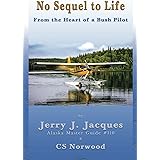Mastering Survival Escargot: Foraging and Cooking Wild Snails
Imagine a scenario where traditional food sources become scarce, and the ability to find sustenance from the land suddenly shifts from a hobby to a critical skill. It is in such times that overlooked natural provisions, such as wild snails, can become invaluable. The accompanying video demonstrates the practicalities of collecting and cooking these often-underestimated creatures, offering a fascinating glimpse into a unique aspect of survival foraging. This guide aims to expand upon the methods and considerations introduced, ensuring that the necessary knowledge for safely preparing survival escargot is imparted.
The Art of Foraging: Locating and Identifying Wild Snails
Firstly, successful foraging for wild snails begins with understanding their preferred habitats and behavioral patterns. As observed in the video, South Texas, even in the “middle of winter” during the “first week of February,” can present ideal conditions for snail activity. Snails are often found in environments that offer protection from the elements and a consistent food source. Specifically, areas beneath cliff faces or under logs and rocks provide the damp, sheltered conditions these gastropods favor. The presence of lush greenery, such as clover, often signals a rich foraging ground, indicating a ready food supply for the snails.
One might consider the benefits of a thorough search; simply walking through an area may not reveal the full potential of a foraging expedition. Rather, actively turning over small rocks, examining the undersides of fallen branches, and peering into crevices is crucial. Such diligence often uncovers the “creatures that you’re looking for,” which might otherwise remain hidden. Foragers should be aware that while the video showcased five snails being collected, larger hauls are certainly possible depending on the location and conditions, providing a more substantial meal.
Essential Gear and Firewood Selection
Secondly, preparing for an outdoor cookout requires more than just gathering the food itself; practical tools are also essential. The host skillfully demonstrates how a few pieces of green mesquite can be transformed into rudimentary tongs and a skewer. This highlights a fundamental principle of bushcraft: improvising tools from available natural resources. Such ingenuity can be a game-changer when operating without conventional equipment.
Another crucial aspect is the selection of appropriate firewood, particularly for cooking. Mesquite, as emphasized in the video, is a superior choice. Its density, often compared to steel when aged, allows it to burn “for a long time” and “very hot.” This characteristic is attributed to its “heartwood,” which develops after “a couple years of being dead” and decaying. Imagine if you only had access to lighter, less dense wood like hackberry, which “shatters” easily and burns quickly. The sustained, intense heat provided by mesquite is indispensable for effectively cooking wild edibles and ensures a stable cooking platform. It is always advised that time is taken to locate suitable wood, even if larger, less manageable pieces are initially encountered.
The Humane Dispatch and Initial Cook
Thirdly, the ethical considerations surrounding the dispatch of foraged animals are important for many survivalists and foragers. The video directly addresses the challenge of humanely dispatching snails, noting that many common methods are often perceived as “torture.” These can include processes involving salt or prolonged rinsing, which can cause extended suffering. The method presented—placing the snails “foot up” directly onto “the most intense portion of that heat” from hot coals—is suggested as the most rapid and thus, humane option. It is believed that any neural activity “will cease almost immediately” due to the intense thermal shock, minimizing distress for these small creatures.
The initial cooking stage involves keeping the snails over the hot coals “until they stop bubbling.” This serves to thoroughly cook them within their shells. As each snail reaches this point, it is removed from the heat, signaling readiness for the next preparation phase. It is a vital step in breaking down their internal structure and preparing them for the extraction of the meat, which is typically a more challenging process if undercooked.
Extraction, Cleaning, and Final Cooking for Safety
Next, once the initial cook is complete, the process of extracting the snail meat from its shell commences. While some foragers might attempt to pry the meat out, breaking the shell is often the more efficient and less frustrating method. This allows for easier separation of the edible portion from the shell casing. After extraction, the snails are given an initial clean, with the aim of removing any obvious debris.
A second, crucial cooking phase is then undertaken. The cleaned snail meats are placed onto a skewer and cooked “over the flames once more.” This step is not merely for taste but is paramount for safety. Wild snails are known to harbor “a lot of parasites,” and a thorough cook is essential to ensure these are eradicated. The host prudently reminds viewers of the critical balance in survival: “You can slowly starve, or you can get a parasite or eat something toxic and kill yourself really fast.” Therefore, ensuring a “full cook” is a non-negotiable step to prevent illness and maximize the safety of consuming wild protein. This extra cooking further reduces any remaining sliminess, making the texture more appealing.
Addressing Toxins and the Purging Process
Finally, a significant concern when consuming wild snails, particularly “garden snails” or those found near human habitations, is the potential for toxins. Snails can ingest “poisons, pesticides, all kinds of things” present in their environment, which can then be transferred to those who consume them. To mitigate this risk, a process known as “purging” is often recommended. This involves keeping the snails in a container for “three days,” feeding them non-toxic foods, and regularly cleaning out their waste.
While the host notes that in wild, unadulterated areas, one might have a clearer understanding of what “my snails are eating,” and can thus avoid those near known toxic plants, exercising caution is always advised. Purging provides an additional layer of security, especially when the snail’s diet cannot be fully verified. This ensures that any ingested toxins are expelled from the snail’s system before consumption. Ultimately, safety should always be prioritized, meaning that wild snails, like any foraged food, must be prepared intelligently and cautiously to deliver their full nutritional benefit as a viable survival food. When properly prepared, many have found that wild snails, tasting somewhat like “calamari,” are a delightful and highly nutritious addition to a survival diet, even without seasoning.











